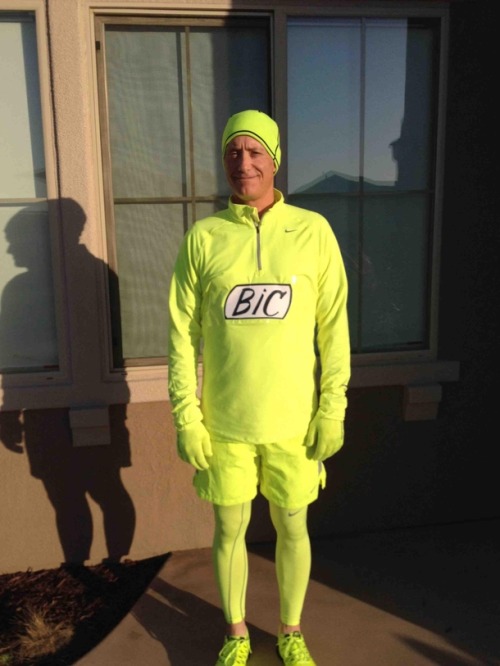You might think or running and assume that because the activity is a pretty basic exercise that you wouldn't need a whole lot of gear to survive. That may be true for the everyday recreational runner, but for marathon training, you need to be prepared! The impact that running long distances has on your body can be pretty damaging and can lead to injury or illness fairly quickly if you don't have the right equipment to lay down the miles. Here are a few must-haves to get you through your training:
No brainer, right? The kind of shoes you wear when you're running play the biggest role in staving off injury when it comes to gear. Each runner has a different foot shape, stride, and way that they strike the road with their feet while they run, so there is no one-size-fits-all solution when it comes to picking out your shoes. It takes an annoyingly long time to find a shoe that will work the best for you, but it truly makes all the difference in the world. I would suggest dedicating a solid few hours to this search, and even going to a running store where the employees are trained in analyzing the way you run and matching that to a shoe that will carry through the hundreds of miles that you'll be running in preparation for the big day.
If you've seen any runner on the street, chances are they're wearing some sort of fluorescent color that you can see from 3 blocks away. It's not a coincidence that all runners tend to have the same color schemed wardrobe. It's really because it makes us look awesome stand out to vehicles on the road. I don't live in a large city, so in my running experience I have spent most of my training running on roads that do not have sidewalks and in some cases have quite a few blind turns. I've been in a few close calls with oncoming vehicles and I'm pretty convinced that one day I'm not going to be so lucky. (#runnersfate) BUT wearing bright colors help drivers see me and hopefully take the time to give me space to run. Neon and reflective materials should definitely be part of your wardrobe (ESPECIALLY if you're training in the winter months with less sunlight) if they aren't already!
Hydration Pack
This is essential for your long runs! If you're not someone who likes to carry bottled water with you, you need to have a way to bring it with you. I suggest investing in a hydration pack of some sort for some hands-free hydration! Be careful with these if you live in colder areas, as they do have the potential to freeze and act as a nice weight for you to carry around on your back. (But I mean, that could count as additional training, right?
Fuel Belt
(I like to call it a utility belt... anything that makes me feel a little bit like Batman is a win in my book. This is another essential for long runs. When you're running for more than an hour, your body needs fuel. Eating while running was such a strange concept to me, and sometimes I'm just not hungry while I run, but you need to refuel your body. That's where a Fuel Belt comes in! (I like to call it a utility belt... anything that makes me feel a little bit like Batman is a win in my book.) It has pockets and loops for you to put your favorite fueling materials in (granola bars and Gatorade blocks are my personal favorite) and it even can store your phone, ID, insurance cards, and any other fun things you'll need while you're on the road for a few hours.
Cold Weather Gear
If you're planning on a spring or late fall marathon, chances are you'll be running in some pretty cold temperatures. Being outside for an extended period of time in single-digit temperatures is a nice invitation to frost bite, which is no fun, so make sure you're bundling up when you hit the road! I recommend a nice pair of gloves, a headband or hat that covers your ears, and some Under Armour Cold Gear to wear under your clothes (so worth the investment! I've had my set for going on 7 years now and it still works wonderfully!).
When it comes to marathon training, everyone's going to be different and use a variety of combinations of gear to help them through. Make sure you're picking out what feels right for you, and after a while you'll be able to tell what works and what doesn't!
More of Stumbling Through 26.2: Picking a Plan
Cold Weather Gear
(Source)
If you're planning on a spring or late fall marathon, chances are you'll be running in some pretty cold temperatures. Being outside for an extended period of time in single-digit temperatures is a nice invitation to frost bite, which is no fun, so make sure you're bundling up when you hit the road! I recommend a nice pair of gloves, a headband or hat that covers your ears, and some Under Armour Cold Gear to wear under your clothes (so worth the investment! I've had my set for going on 7 years now and it still works wonderfully!).
When it comes to marathon training, everyone's going to be different and use a variety of combinations of gear to help them through. Make sure you're picking out what feels right for you, and after a while you'll be able to tell what works and what doesn't!
More of Stumbling Through 26.2: Picking a Plan







No comments:
Post a Comment